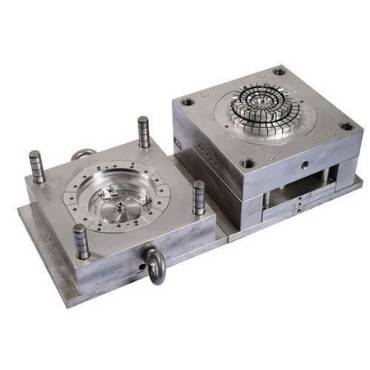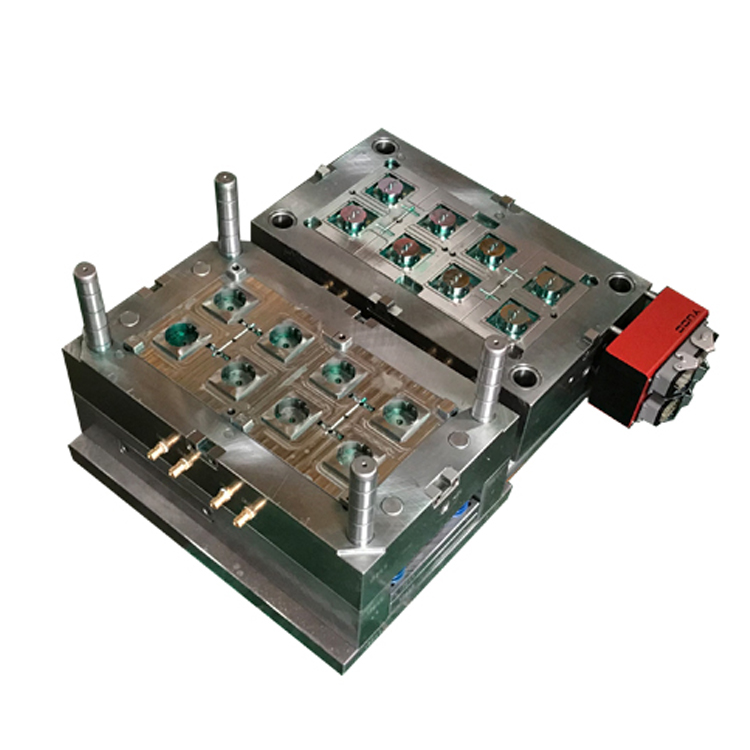The Key Points of Material Selection for Metal Injection Molding Molds
Injection molds can be simply divided into two parts: mold frame and cavity
Injection mold mold frame and plastic injection mold mold frame is identical, the mold frame material can refer to plastic injection mold mold frame to choose: generally, the moving template, fixed mold, push plate can be used 45 steel, tempering treatment hardness of 180 ~ 250HBS. other plates can be used 45 steel or Q235 steel. For the precision requirements of particularly high mold frame, all plates can be used 45 steel tempering treatment, or even Cr12 type of micro-deformation mold steel, quenching treatment. Guide pillar, guide sleeve can be used T8A quenched to 50~55HRC or 20 steel carburizing 0.5~0.8mm thick, quenched to 56~60HRC.

When the injection mold is working, it generally bears an alternating load of 20~50MPa, accompanied by alternating cold and hot temperatures. In ultra-precision injection molding, the molding pressure used may even exceed several times the normal use pressure. The service life of the injection mold is generally tens of thousands or even hundreds of thousands of times, so the mold should have sufficient strength and stiffness.
The metal injection mold cavity is generally made of hardened die steel with a hardness of 58~62HRC, so attention must be paid to the stress concentration caused by sharp corners, grooves, cuts and processing defects. These defects will greatly reduce the fatigue strength of the mold.
For the cavity part, material selection mainly considers wear resistance, quenching shape stability, corrosion resistance and processing performance. Because the metal injection material has much more severe scouring and wear on the mold than ordinary plastics, wear resistance is the most basic requirement for cavities used for batch production, and generally requires a cavity hardness of 58~62HRC. Tool steel has comprehensive strength, hardness, toughness, hardenability, corrosion resistance and processing performance. It is the preferred material for cavities. Commonly used materials are alloy die steels such as Cr12, Cr12MoV, Cr12MoV, Cr2Mn2SiWMoV, Cr6WV and high-speed steels W18CrV, W6Mo5Cr4V2, etc. Injection molds are generally complex in shape and often use ultra-precision electric sparks, wire cutting and other electrical processing methods. They require materials with uniform structure, high hardenability and high quenching shape stability. Metal injection materials often produce corrosive gases at injection temperatures, which also require corrosion resistance for mold materials.
In special cases, such as sample and small batch part fast belt production, in order to simplify the process, Q235 steel, 45 steel. Aluminum alloy, zinc-nickel alloy, etc., are also often used to make some cavities. This will greatly shorten the development cycle of samples. But such molds are generally not suitable for batch production.
In summary, mold selection must be based on product batch size, part shape and accuracy, processing methods and processes used, difficulty of heat treatment required, and convenience of material source availability to consider comprehensively.

Metal injection molding molds require high hardness, wear resistance, and thermal fatigue resistance, as well as uniform structure, high hardenability and high quenching shape stability. Metal injection materials often produce corrosive gases at injection temperatures, which also require corrosion resistance for mold materials.
In special cases, such as fast belt production of samples and small batches of parts, in order to simplify the process, Q235 steel, 45 steel. Aluminum alloy, zinc-nickel alloy, etc., are also often used to make some cavities. This will greatly shorten the development cycle of samples. But such molds are generally not suitable for batch production.
In short, mold selection must be based on product batch size, part shape, accuracy, processing methods and technology used, difficulty of heat treatment performed, and convenience of material source.
Metal injection molds are generally used for small parts production and have small mold sizes. Under normal use conditions, as long as the use area of the template does not exceed 60% of the length and width, and the depth does not exceed 10%, strength calculation is not required. Moreover, the shape of the mold is relatively complex, and the actual stress situation in the cavity is also very complex. Even if various assumptions are made, it is difficult to obtain results using elasticity mechanics and finite element methods. Therefore, mold design often uses a tolerance method with an enlarged safety factor.
But for larger products or ultra-high pressure precision molding processes, if possible, the strength of the cavity should be calculated. Prevent deformation from being too large due to insufficient strength and cause overflow or even damage. The strength calculation of cavities with relatively simple shapes can refer to relevant plastic mold design manuals for injection mold design. Complex cavities can be analyzed and calculated using finite element or professional software.
To ensure product accuracy, mold design should pay attention to the following points:
Reasonably design the magnification factor of the mold. On the premise of ensuring smooth molding, minimize the amount of binder added.
Reasonable mold structure. Precision size parts should have a certain hardness and be easy to replace; reasonable tolerances are adopted; forming blanks'holes' should adopt upper limit tolerances as much as possible; forming blanks'axes' should adopt lower limit tolerances as much as possible; reasonable process structure of parts , Ensure processing accuracy.
Reasonably select the form and position of the gate.
Reasonably choose the way of ejection, try to make ejection uniform and stable to reduce deformation.
The mold should have a temperature adjustment system to ensure uniform filling and cooling as much as possible and reduce density unevenness.
Reasonably select the number and layout of cavities, and try to use uniform and symmetrical layout to ensure balanced filling. Especially for precision products, the number of cavities should be minimized.
Reasonable clearance to avoid flash and burrs.
The common metal mold materials and their characteristics are:

(1) Stainless Steel
Steel is one of the most widely used mold materials. Steel has high hardness, strength, and good wear resistance and corrosion resistance. At the same time, steel is easy to process, relatively low in price, and also convenient for mass production. However, steel has poor thermal conductivity and is prone to thermal expansion and thermal cracking problems. Therefore, when using steel to make molds, it is necessary to adjust and improve according to specific situations.
(2) Aluminum
Aluminum is another common mold material. It has the characteristics of light weight, easy processing, good thermal conductivity, etc., and is suitable for making small molds. At the same time, aluminum has a relatively low price, so it is also widely used in some low-cost production. However, aluminum has low hardness and is difficult to withstand large impacts and pressures. It is easy to deform and wear in long-term production.
(3) Copper
Copper is a high-quality mold material, because it has high hardness, strength and corrosion resistance. In addition, copper is very suitable for making high-precision molds and products. However, copper has a relatively high price and is difficult to process. It requires professional personnel to handle it.
(4) Zinc
Zinc is a more common mold material. Zinc has low hardness, but also has good wear resistance and corrosion resistance, and has a relatively low price. In addition, zinc has good thermal conductivity and is easy to process and make. However, due to its low hardness, its service life is not as good as other materials, and it is only suitable for some small molds.
Excellent Team of Engineers and Technicians
Harber has a professional team of talented engineers with years of technical accumulation to ensure that we can provide customers with products, mold designs, and metal parts solutions.











